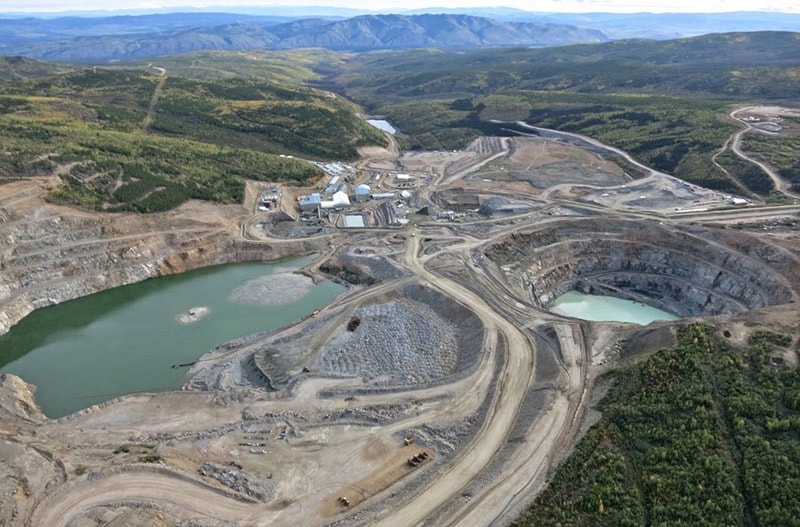The Minto mine’s request to dump more wastewater into the Yukon River has been approved.
The mine will be allowed to discharge 705,000 cubic metres of drainage water from its storage pond and its open pit, the Yukon Water Board decided Tuesday.
The water will be dumped at a rate of 10,000 cubic metres a day until the end of October. The dumping approval comes on the heals of another request Minto made in early July to dump 300,000 cubic metres.
That request was also approved. At the time, the water board scolded the mine for abusing the emergency provisions in its water licence.
The extra water is due to unexpected high-levels of storm water, the mine claims, but it is tainted with copper from the site. The water in the pit may not be as clean as the water in the storage pond because it hasn’t been given a chance to settle.
The water will be dumped in Minto Creek, near the Yukon River.
The headwaters of Minto Creek are key chum and chinook salmon spawning grounds, according to an Environment Canada intervention in the submission. Minto Creek also supports a population of Arctic grayling.
Minto’s impact on water was originally assessed in the mid 1990s and many changes to the mine have since been made, making the discharge’s effect on fish life impossible to determine, wrote the Environment submission.
The mine’s milling rate, its layout and tailings treatment method have all changed since the original submission.
The mine will have to monitor water quality daily and perform tests to evaluate whether its discharge is killing fish.
There is no assurance that the discharge will not harm the environment or fish in the Yukon River, said Environment’s intervention.
Minto’s most recent request stems from an Energy, Mines and Resources inspector’s report that declared the situation at the mine an “emergency.”
The walls of the water-filled pit were becoming damaged and the drainage of the pit should begin immediately to allow access to the ore body at the bottom, wrote mineral branch director Robert Holmes in his report.
“There is insufficient detail presented in this application and in accompanying information to fully comprehend the full nature of the ‘emergency,’
and what the mine will do in the future,” the Environment Canada intervention says.
No qualified engineers have yet evaluated the geotechnical problems in the pit that Holmes identified, it says.
The discharge is more about Minto losing money than about it being a critical danger to human life and the environment, said the Yukon Conservation Society’s intervention.
The wastewater was killing profits for the mine because its high-grade copper was underwater.
Minto has been processing piles of less lucrative excavated copper instead, and was worried that without the emergency discharge it would take two years for the pit to drain.
Minto was also worried that freezing would become a serious problem.
Contact James Munson at
jamesm@yukon-news.com
